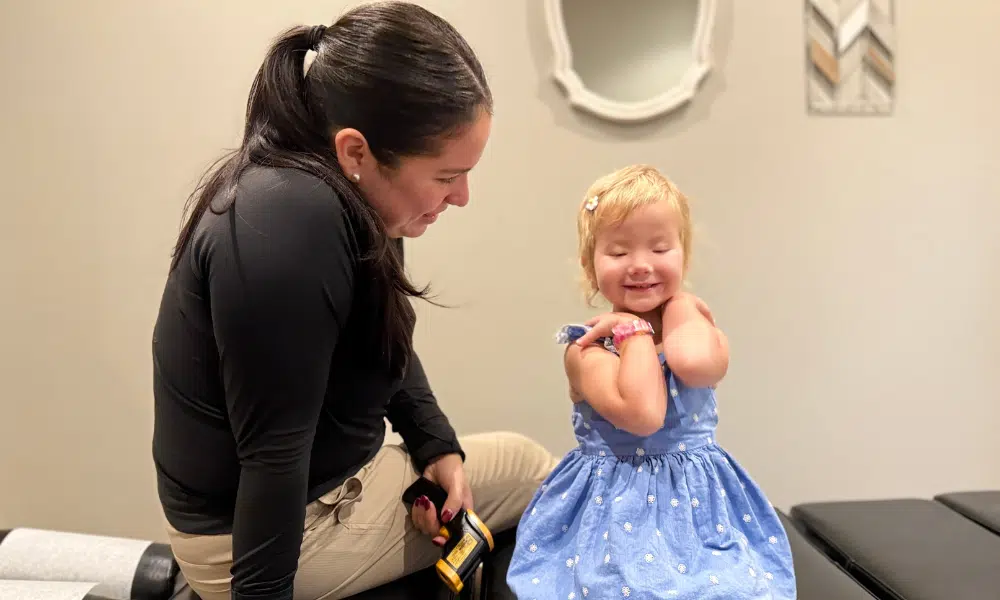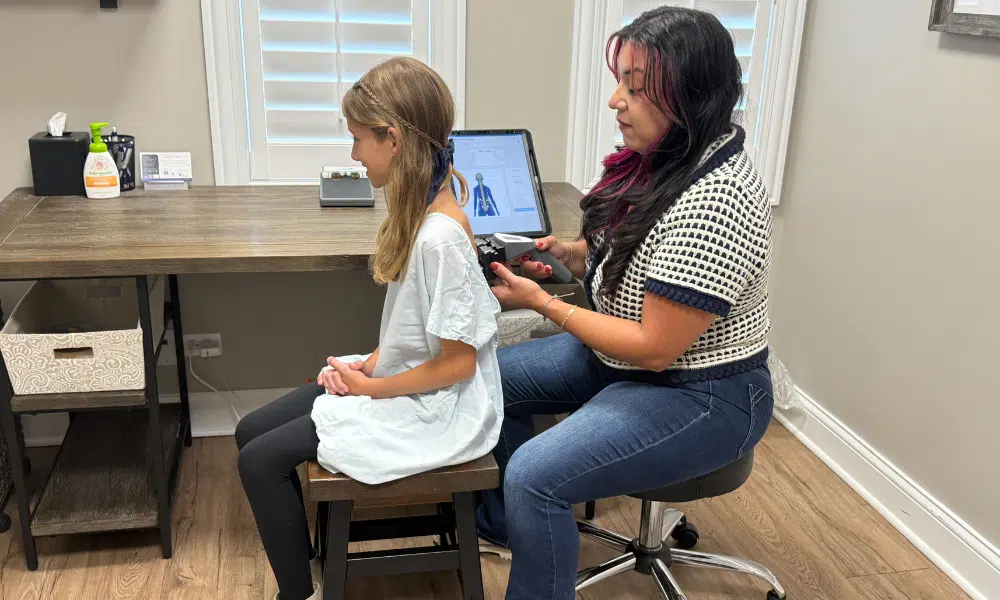You’ve tried the diets, supplements, and therapies. Your child with Autism Spectrum Disorder has made some progress, but now you’re stuck. Despite your best efforts, language remains limited, behaviors persist, and that breakthrough feels just out of reach.
Your child could belong to a specific subset of children with autism whose brains can’t properly transport or use folate, a critical nutrient for brain development and communication. There’s a targeted medical intervention called leucovorin that’s showing real, measurable results for these specific children. The keyword here is “specific.”
This isn’t another miracle cure or one-size-fits-all supplement. Leucovorin has been shown to help children with documented folate receptor autoantibodies (FRAA) or cerebral folate deficiency (CFD)—conditions you can actually test for. But here’s what most articles won’t tell you: even the right intervention won’t work optimally if your child’s nervous system isn’t ready to receive it.
At PX Docs, we believe in getting the foundation right first. When your child’s nervous system is balanced and regulated, everything else, including targeted biomedical interventions, works better.
What Is Leucovorin and Why Does It Matter?
Leucovorin (folinic acid) is essentially a “ready-to-use” form of folate that your child’s body doesn’t have to convert or process. Think of regular folate like a package that needs unwrapping and assembly before the brain can use it. Leucovorin arrives pre-assembled and ready to work.
The real problem isn’t folate deficiency in the blood; it’s getting folate into the brain. The blood-brain barrier acts like a security checkpoint, and folate needs special transporters (folate receptor alpha) to cross. Research has found that in some children with autism, the immune system creates antibodies called FRAAs that block these transporters. Picture security guards mistakenly blocking delivery trucks from entering a construction site—the supplies are available, but can’t reach where they’re needed.
Dr. Frye’s randomized trial in Molecular Psychiatry showed that high-dose folinic acid improved verbal communication in children with a
utism and language impairment. The results were strongest in FRAA-positive children. This leads to meaningful improvements, with some children potentially speaking in sentences for the first time.
U.S. regulators have begun recognizing leucovorin as a care plan for cerebral folate deficiency—a rare condition that can present in individuals with autism. But leucovorin isn’t an autism cure or even a sole care plan. It’s a targeted intervention for a specific metabolic dysfunction affecting a subset of children with autism.
The Neurological Foundation: Why Your Nervous System Runs the Show
At PX Docs, we operate on a fundamental principle: your child’s nervous system sits upstream from everything else—gut health, immune function, nutrient absorption, even genetic expression. You can pump the best nutrients into a dysregulated nervous system, but if the control center is offline, those nutrients can’t work properly.
The vagus nerve directly controls:
- Digestive function: Aids in stomach acid production, enzyme release, and intestinal motility
- Gut barrier integrity: The tight junctions that keep the gut lining sealed
- Immune modulation: Controlling inflammation and keeping responses appropriate
- Nutrient absorption: Uses gut microbiota to transmit information from the gastrointestinal tract to regulate muscle contraction in the gut
- Detoxification pathways: Liver function and cellular methylation that leucovorin supports
Research demonstrates that when your child is stuck in chronic sympathetic dominance (constant fight-or-flight mode), blood flow is restricted from digestive organs. The gut lining becomes permeable. Stomach acid drops, enzymes decrease, and suddenly your child can’t properly absorb nutrients, including folate. The immune system becomes hypervigilant, more likely to create those problematic autoantibodies blocking folate transport.
This creates the “Perfect Storm” cycle: nervous system dysfunction leads to poor absorption, creating nutrient deficiencies, stressing the nervous system further, and worsening gut function. Your child gets trapped in this loop, and no amount of supplements can break the cycle if the nervous system stays dysregulated.
The Autoimmune-Gut-Brain Connection
Many children with autism have significant autoimmune dysfunction. Studies have identified that their severe immune dysfunction conditions can trigger the production of autoantibodies—immune proteins that mistakenly attack the body’s own tissues. These autoantibodies have been found in the brains of children with autism, creating a two-front assault on development.
Brain autoantibodies trigger severe neuroinflammation, destroy neurons, increase demyelination, and severely affect neurological functioning. Researchers have observed these antibodies and measured their effects.
Since approximately 70% of immune cells reside in the intestinal mucosal barrier, autoantibodies here have massive systemic effects. They attack the gut lining, creating chronic inflammation that further compromises the barrier. This damage creates a cascade:
- Toxins and undigested proteins can enter the bloodstream
- The immune system creates more autoantibodies
- Food sensitivities develop (especially gluten and casein)
- Malabsorption prevents nutrient utilization
- Chronic GI traits emerge: constipation, diarrhea, reflux, pain
This autoimmune chaos directly connects to folate metabolism. The same inflammatory processes can trigger the production of FRAAs—those blocking antibodies that prevent folate from entering the brain. The combination of genetic susceptibility, environmental triggers, and chronic nervous system dysregulation creates perfect conditions for autoimmune dysfunction.
Who Should Consider FRAT Testing?
Not every child with autism needs FRAT testing, but certain red flags suggest investigating folate transport issues:
- Language regression or plateau: Children who have lost words or seem stuck at the same communication level
- Oral-motor apraxia: Difficulty coordinating mouth movements for speech or feeding
- Severe feeding challenges: Beyond pickiness—gagging, texture refusal, extreme limitations
- Family autoimmune history: Thyroid disease, rheumatoid arthritis, lupus in family
- Poor response to standard interventions: When therapies aren’t yielding expected results
- GI traits with developmental delays: The combination suggests gut-brain issues
The FRAT test is a simple blood draw measuring blocking and binding folate receptor antibodies. It’s advised that your child must pause all folate supplements for 48 hours before testing for accurate results. Some practitioners also recommend checking B12 status, homocysteine, and methylation panels.
The PX Docs Approach to Neurologically-Focused Chiropractic Care
Success with leucovorin depends on preparing your child’s nervous system to receive the support it needs.
- Nervous System Regulation: Through Neurologically-Focused chiropractic adjustments, research suggests we can influence vagal tone and reduce sympathetic overdrive. We monitor progress using HRV (heart rate variability) technology to obtain real-time data on Autonomic Nervous System balance. HRV measurement provides validated insights into autonomic function. As vagal tone improves, you’ll see better sleep, digestion, and calm before starting supplements.
- Strategic Supplementation Once the foundation is solid, leucovorin supplementation (if FRAT-positive) begins under medical supervision. Start low and slow. Track specific outcomes:
- Document language changes weekly
- Note engagement during activities
- Monitor sleep and behavioral patterns
Supporting nutrients—methylated B12, B6, additional methylfolate—create synergistic effects. Your practitioner guides dosing based on responses.
- Ongoing Support Regular adjustments maintain nervous system function while your child’s brain develops new pathways. Family factors matter. Reducing stress, maintaining routines, and supporting everyone’s nervous system health accelerates healing.
Natural Folate Support: Food as Medicine
While research indicates synthetic folic acid has higher bioavailability than natural folate, food sources still remain important for overall nutrition. Best sources include:
- Leafy greens: Spinach, kale, romaine
- Legumes: Lentils, black beans, chickpeas
- Vegetables: Asparagus, Brussels sprouts, broccoli, avocado
- Fruits: Oranges, strawberries, papaya
- Organ meats: Liver (if tolerated)
For picky eaters, try green smoothies, black bean brownies, or lentil pasta. Start with tiny amounts mixed into preferred foods. Remember, stressed mealtimes create nervous system dysautonomia that impairs digestion; sometimes backing off pressure allows better eating naturally.
Your Child’s Unique Path Forward
Leucovorin represents hope for children with documented folate transport issues who haven’t responded fully to other interventions. But it’s about understanding your child’s unique biochemistry and addressing root causes in the right order.
The non-negotiable foundation remains nervous system regulation. Without proper vagal tone and autonomic balance, even perfectly targeted interventions can’t reach full potential.
Visit our PX Docs directory to find a PX Docs practitioner near you who can assess nervous system function. Look for red flags such as language regression, feeding issues, family autoimmune history, and discuss FRAT testing with your medical team if these indicators are present. Remember to build your foundation first, don’t skip to supplements, and track everything. Progress, reactions, and changes guide decisions
This isn’t about “curing” autism or changing who your child is. It’s about removing barriers—neurological, metabolic, or nutritional—so that your child can access their full potential. Some children need leucovorin to remove the folate transport barrier. All children need a regulated nervous system to thrive.
Start with the nervous system, investigate thoroughly, and proceed strategically. Your child’s breakthrough might not come from trying everything; it might come from finding exactly what they need.






